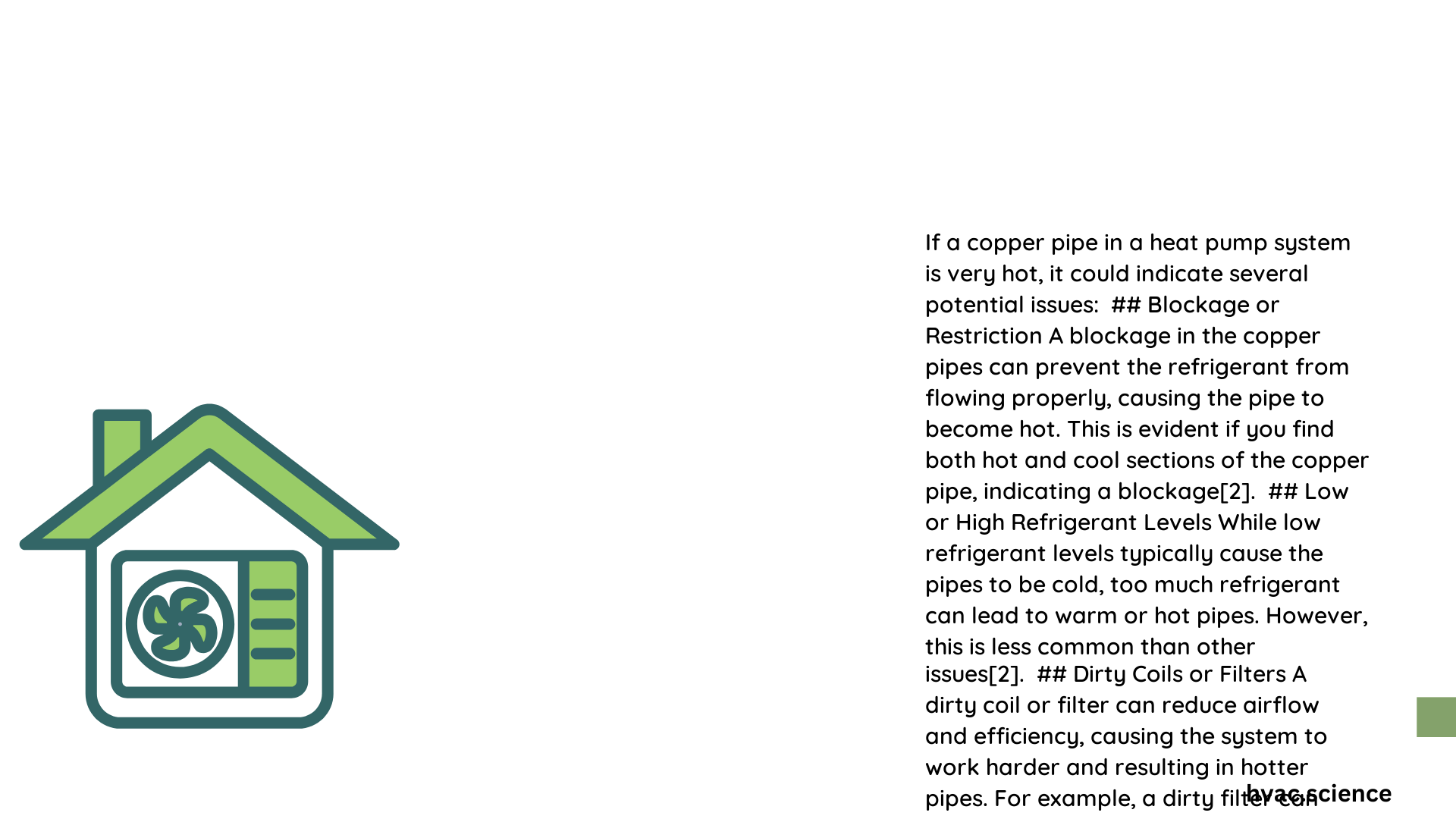Heat pump copper pipes experiencing extremely high temperatures can pose significant performance and safety challenges. Professionals and homeowners must understand the intricate thermal dynamics, material tolerances, and strategic management techniques to ensure optimal system efficiency and prevent potential damage or energy loss.\n\n## What Causes Copper Pipes to Become Very Hot in Heat Pumps?\n\nHeat pump copper pipes can reach elevated temperatures due to several critical factors:\n\n### Thermal Transfer Mechanisms\n\n- Refrigerant Circulation: The primary mechanism generating heat in copper pipes\n- Compression Cycle Dynamics: Direct influence on pipe temperature\n- System Load Variations: Fluctuating operational demands\n\n### Temperature Threshold Analysis\n\n| Temperature Range | Risk Level | Potential Consequences |\n|——————|————|————————|\n| 40-80°C | Moderate | Minor efficiency reduction |\n| 80-120°C | High | Potential insulation damage |\n| 120-150°C | Critical | System failure risk |\n\n## How Can You Prevent Excessive Heat Buildup?\n\nPreventing overheating requires a multi-faceted approach:\n\n1. Advanced Insulation Techniques\n – Use high-temperature resistant materials\n – Implement multi-layer insulation strategies\n – Select appropriate thickness based on thermal conductivity\n\n2. Proper System Design\n – Optimize pipe diameter\n – Ensure balanced refrigerant charge\n – Implement strategic pipe routing\n\n### Recommended Insulation Materials\n\nEffective insulation is crucial for managing heat pump copper pipe temperatures:\n\n- Closed-cell foam insulation\n- Fiberglass sleeves\n- Elastomeric rubber compounds\n- Polyisocyanurate foam wraps\n\n## What Are the Warning Signs of Overheating?\n\nRecognize potential issues through these indicators:\n\n- Unusual system noise\n- Reduced cooling/heating efficiency\n- Visible pipe discoloration\n- Intermittent system performance\n\n### Diagnostic Strategies\n\n1. Regular thermal imaging\n2. Periodic system performance monitoring\n3. Professional annual inspections\n4. Advanced temperature sensor installation\n\n## Technical Recommendations for Temperature Management\n\nImplement these professional-grade strategies:\n\n- Maintain recommended flow velocities (1-2 m/s)\n- Use high-quality copper tubes (Type L or Type K)\n- Install expansion joints for thermal flexibility\n- Consider ambient temperature variations\n\n### Professional Calibration Techniques\n\n- Precise refrigerant charge measurement\n- Advanced flow rate calculations\n- Comprehensive thermal performance analysis\n\n## Maintenance Best Practices\n\n- Quarterly Inspection: Check pipe integrity\n- Annual Professional Assessment: Comprehensive system evaluation\n- Immediate Anomaly Reporting: Address temperature irregularities promptly\n\n### Expert Tip\n\n> Proactive management prevents 80% of potential heat pump copper pipe temperature-related failures.\n\n## Conclusion\n\nManaging heat pump copper pipe temperatures requires technical expertise, strategic planning, and continuous monitoring. By understanding thermal dynamics and implementing robust prevention strategies, you can ensure optimal system performance and longevity.\n\n### Reference:\n- ASHRAE Technical Resources\n- HVAC Thermal Management Guidelines\n- Copper Pipe Technical Specifications

